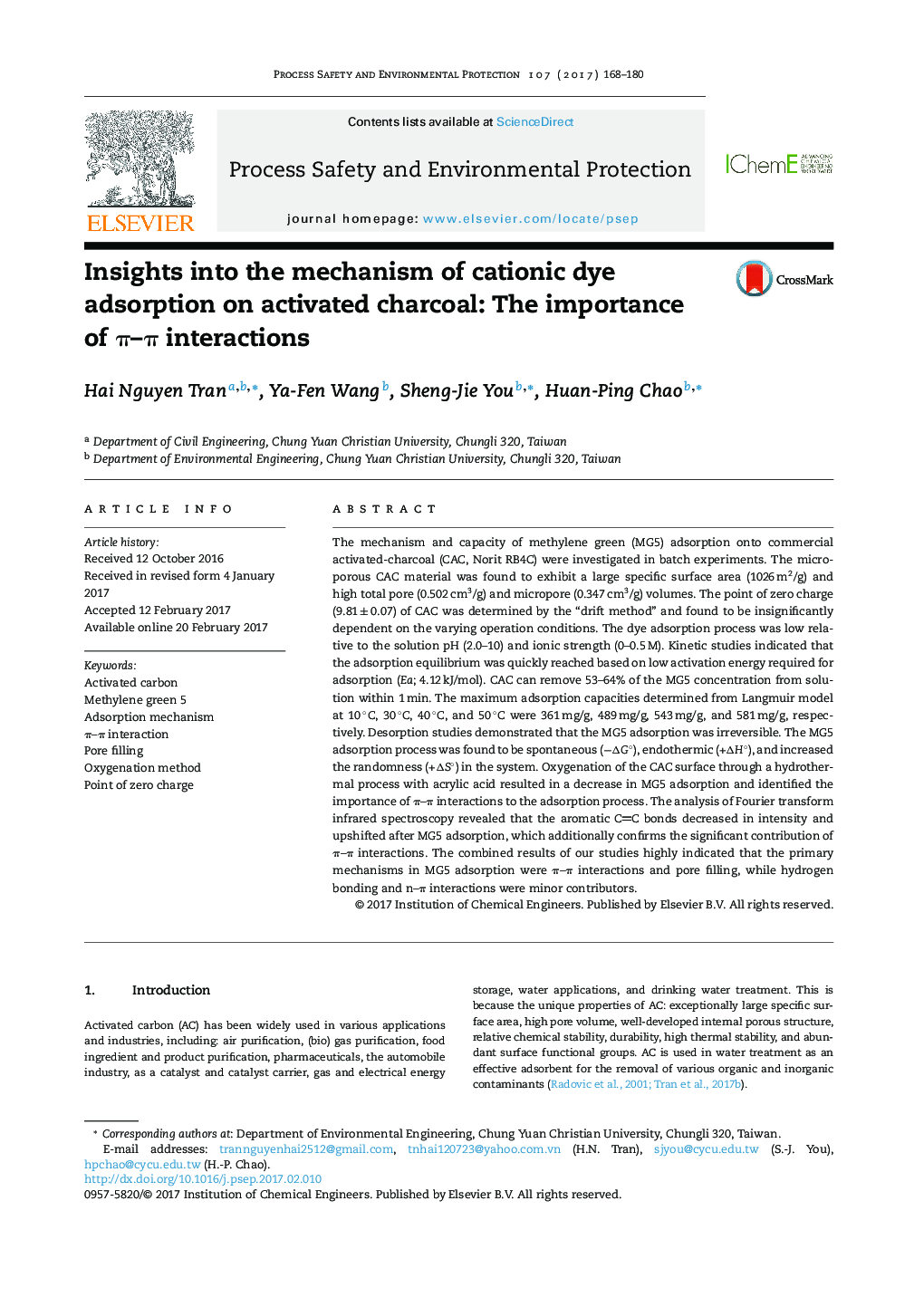| کد مقاله | کد نشریه | سال انتشار | مقاله انگلیسی | نسخه تمام متن |
|---|---|---|---|---|
| 4980980 | 1453333 | 2017 | 13 صفحه PDF | دانلود رایگان |
عنوان انگلیسی مقاله ISI
Insights into the mechanism of cationic dye adsorption on activated charcoal: The importance of Ï-Ï interactions
دانلود مقاله + سفارش ترجمه
دانلود مقاله ISI انگلیسی
رایگان برای ایرانیان
کلمات کلیدی
موضوعات مرتبط
مهندسی و علوم پایه
مهندسی شیمی
بهداشت و امنیت شیمی
پیش نمایش صفحه اول مقاله

چکیده انگلیسی
The mechanism and capacity of methylene green (MG5) adsorption onto commercial activated-charcoal (CAC, Norit RB4C) were investigated in batch experiments. The microporous CAC material was found to exhibit a large specific surface area (1026 m2/g) and high total pore (0.502 cm3/g) and micropore (0.347 cm3/g) volumes. The point of zero charge (9.81 ± 0.07) of CAC was determined by the “drift method” and found to be insignificantly dependent on the varying operation conditions. The dye adsorption process was low relative to the solution pH (2.0-10) and ionic strength (0-0.5 M). Kinetic studies indicated that the adsorption equilibrium was quickly reached based on low activation energy required for adsorption (Ea; 4.12 kJ/mol). CAC can remove 53-64% of the MG5 concentration from solution within 1 min. The maximum adsorption capacities determined from Langmuir model at 10 °C, 30 °C, 40 °C, and 50 °C were 361 mg/g, 489 mg/g, 543 mg/g, and 581 mg/g, respectively. Desorption studies demonstrated that the MG5 adsorption was irreversible. The MG5 adsorption process was found to be spontaneous (âÎG°), endothermic (+ÎH°), and increased the randomness (+ÎS°) in the system. Oxygenation of the CAC surface through a hydrothermal process with acrylic acid resulted in a decrease in MG5 adsorption and identified the importance of Ï-Ï interactions to the adsorption process. The analysis of Fourier transform infrared spectroscopy revealed that the aromatic CC bonds decreased in intensity and upshifted after MG5 adsorption, which additionally confirms the significant contribution of Ï-Ï interactions. The combined results of our studies highly indicated that the primary mechanisms in MG5 adsorption were Ï-Ï interactions and pore filling, while hydrogen bonding and n-Ï interactions were minor contributors.
ناشر
Database: Elsevier - ScienceDirect (ساینس دایرکت)
Journal: Process Safety and Environmental Protection - Volume 107, April 2017, Pages 168-180
Journal: Process Safety and Environmental Protection - Volume 107, April 2017, Pages 168-180
نویسندگان
Hai Nguyen Tran, Ya-Fen Wang, Sheng-Jie You, Huan-Ping Chao,